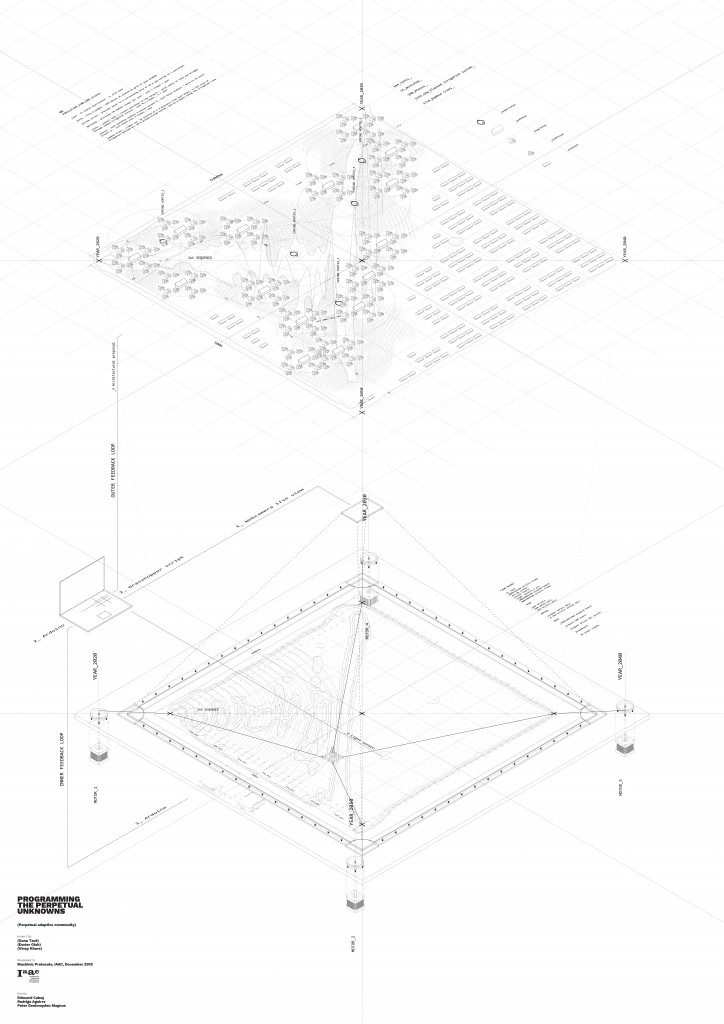Perpetual Adaptive Community
Our world is constantly changing. Mobility becomes the desirable status quo. But unfortunately, there are situations when mobility is caused by or produces political crisis.
A refugee camp is a consequence of this. A temporary, safe place on the long way to destination. But what happens if this pause becomes too long. If the destination becomes blurry and the community needs to address the problems of this rigidly planned space as present and future home.
What happens if a typical refugee camp can no longer be supported by its host country? Can the acute need of turn this undesirable situation into a living, self sofficient community?
Protocol
Project variable
- Sand – 2l evenly distributed – is arid land
- Tents – fits 6 people – 550 pieces at placed on grid at year 0=2020
- Stream vortex – provides water to a surrounding area of 30 m and energy to 3 workshops
- Workshop – processes 50 bamboo clumps per year – uses 5 clumps / year
- Paths – connect each 3 closest workshops in the network – earth paths on land and bridges through swampy irrigation surplus – uses 0.1 clumps / m / year
- Houses – each workshop enables 4 houses around it. Each house enables 3 more to be built around it – each house uses 3 clumps / year
- Bamboo trees – clumps can be planted at 5 m distance from each other, in the area of irrigation defined as: 30 m around stream vortex, and 15 m depth along the irrigation line

Project description
The site is a preplanned and gouverned refugee camp, planned to support 550 families for a maximum period of 1 year. The camp is situated in an arid land, 2 km away from the nearest community. The bounds are well defined and supervised and supplies and gouvernance are provided by the souverain country.
As situation in the souverain country deteriorates, a group of families (60% density) are trapped in this uncertain status. Unable to leave the camp they are faced with the necessity of transforming their temporary situation into a permanent organization.
A stream of underground water is found supplying the land through. This is the binding agent creating the opportunity for this settlement to thrive. . It allows the creation of an irrigation system that will supply a bamboo farm. A plant that offers a full cycle of uses.
The first wells appear and shortly the first plantations. Original tents are displaced and solid houses, made to last of bamboo appear throughout the plantation. These host the people and the material used for harvest and processing.
Slowly the territory is reshaped by the plantation. Necessity for construction bamboo is reduced. More feeding bamboo and rice cultures appear in the swampy land. A new wave makes paths and community places.


Introductory Studio – Machinic Protocols
